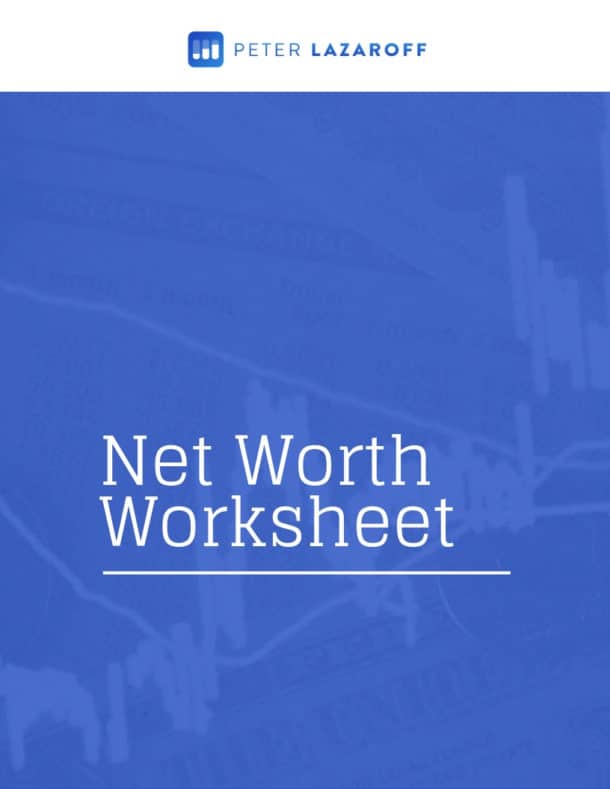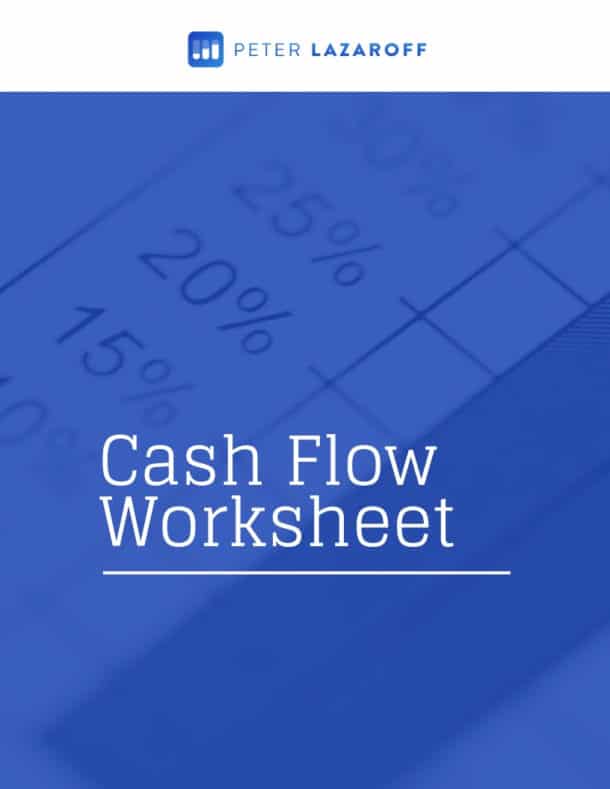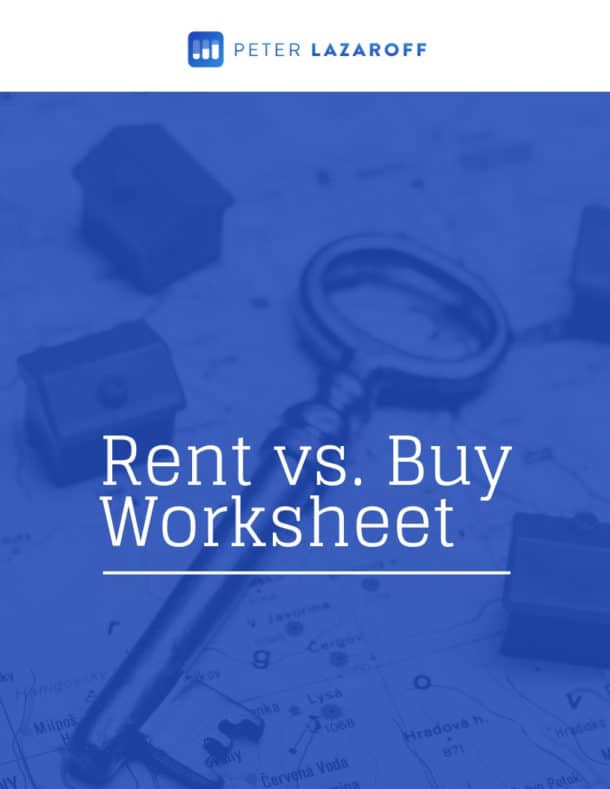Watch Now
Listen Now
Want to see what you may be overlooking in your finances? Discover your biggest opportunities in just 15 questions with my Financial Assessment. There’s a link at the top of the episode description of your podcast app, so be sure to check that out.
Today, I’m joined by Sam Ro, one of the most insightful market commentators out there, and the author of the widely followed TKer Substack. Sam has spent years analyzing financial markets, distilling complex trends into clear, actionable insights for investors.
We’re recording this conversation live from the floor of the New York Stock Exchange, and we’ll be diving into Sam’s 10 Truths About the Stock Market—essential lessons every investor should understand, whether you’re just getting started or have been in the markets for decades.
Sam’s work does a fantastic job of connecting daily headlines to long-term investing principles, and I can’t wait for you to hear his insights.
So let’s get started—here are notes from my conversation with Sam Ro…
Sign up for my newsletter so you can easily reply to my emails with your thoughts or questions for the podcast:
Understanding Market Noise and Long-Term Investing (03:39)
Staying informed without overreacting is one of the biggest challenges for investors. Even though Sam starts each day by checking U.S. futures and overnight market moves in Asia and Europe, he doesn’t report on daily fluctuations.
Instead, Sam writes for long-term investors—people focused on retirement, savings, and wealth building. He helps readers see how short-term news fits into a long-term narrative.
That mindset is reflected in his popular piece, 10 Truths About the Stock Market, which begins with the idea that the long term is undefeated. Based on history and data, Sam reminds us that markets have consistently overcome crises and moved higher over time.
Embracing Market Volatility as the Cost of Long-Term Returns (09:36)
Volatility is often misunderstood as a sign that something is wrong with the market. But as Sam Ro points out, it’s a feature of investing—not a flaw. The market moves up and down regularly, and understanding this reality helps investors avoid overreacting when things get bumpy.
Roughly 47% of all trading days end in negative territory. That means if you’re watching the market daily, there’s nearly a 50/50 chance it’s down on any given day. However, stretch that time horizon out to a year, and the odds of a positive return rise to about 75%. Over three to five years, it’s closer to 90%.
Short-term losses are normal—and often quite steep. The average peak-to-trough decline in a single calendar year is around 14%. That means even in years where the market ends higher, a significant pullback likely occurred along the way. Sam reminds us that those dips aren’t signals to panic—they’re the price of admission for earning long-term returns.
I’ve always said that equity investing is about being an owner in a business. And just like owning a business, there will be rough patches. The market doesn’t deliver steady, predictable gains. It zigs and zags, sometimes sharply. That’s why when we see a 10% drop, the headlines get loud. At 20%, the fear intensifies. And once we’re down 30%—which happens about once a decade—it can feel like the sky is falling.
It’s important to be mentally prepared for volatility, otherwise you’re more likely to make costly mistakes when markets fall. The key is having the right perspective so you can stick with your plan and stay invested when it matters most.
Why Investors Rarely Get ‘Average’ Returns (13:09)
One of the most common misconceptions in investing is the idea that the market delivers a steady 8–10% return each year. While that long-term average is technically accurate, as Sam Ro explains, very few individual years actually land in that range. In fact, only about 5% of all years fall between 8% and 10%.
The average is just that—an average across a wide range of results, including big gains and painful losses. Some years deliver 20%, 30%, even 40% returns. Others fall deep into negative territory. Those extremes are what shape the long-term average, but they don’t reflect the typical investor experience year to year.
Sam notes that it’s easy to lose perspective when recent years have been strong—like back-to-back 20%+ returns. But zoom out a little, and you’ll likely find a steep decline just a year or two prior. That’s the nature of markets. When you combine a -20% year with a +20% and another +20%, you end up near the average—but the ride there is anything but smooth.
This is where managing expectations becomes crucial. If you go into the market expecting that clean, consistent 8–10% return annually, you’re more likely to be rattled when results are volatile. And that can lead to bad decisions—like chasing performance during bull markets or bailing out too early in bear markets.
The reality is that market returns are lumpy. But that unpredictability is also what creates opportunity. As long as your strategy is built to weather those ups and downs, you don’t need average returns every year to achieve long-term success. You just need to stay in the game.
The Key Driver of Stock Prices: Earnings (16:15)
Markets react to all kinds of news—interest rates, inflation, elections, geopolitical events. But as Sam Ro emphasizes, the long-term driver of stock prices is earnings. When you strip away the noise, what really matters is whether the companies you’re invested in are making money—and growing those profits over time.
Sam explains it in simple business terms. When you own a stock, you’re essentially buying a piece of a business. And what determines the value of that business? Its ability to generate profits. After covering costs, taxes, and interest, the money left over—earnings—is what drives long-term valuation.
This connection is more than theory. Historical data shows that the stock market and corporate earnings move closely together over time. That’s why, when thinking about the future, Sam encourages investors to ask one core question: What does this event or policy change mean for earnings growth?
During times of uncertainty—say, a new administration in Washington, a change in tax policy, or concerns about inflation—it’s natural to feel unsettled. But if companies can still grow profits in that environment, the long-term market outlook remains intact. As Sam puts it, investors, managers, and business owners aren’t just sitting still when the landscape changes—they’re adapting. They’re finding ways to keep making money.
I often remind clients of this with a simple analogy: no matter who’s in charge politically, McDonald’s is still going to try to sell cheeseburgers, and Coca-Cola is still going to try to sell more soda. The people running those businesses are incentivized to grow earnings, no matter the backdrop.
That’s why, in moments of fear or uncertainty, it’s helpful to reframe the conversation. Don’t just focus on what’s changing—ask how those changes affect the long-term profitability of the businesses in your portfolio. Because over time, stock prices tend to follow where earnings go.
Index Turnover: How the Market Evolves Over Time (21:24)
It’s easy to think of an index like the S&P 500 as a fixed group of companies—but in reality, the index is constantly evolving. As Sam Ro explains, about 30% of the S&P 500’s components change over any 10-year period. Companies drop out because they shrink, get acquired, or underperform, and they’re replaced by new businesses with better growth prospects.
This natural churn helps keep the index aligned with the most successful, innovative businesses in the economy. Many of today’s biggest names—think Meta, Amazon, Alphabet—weren’t even in the index a couple of decades ago. Now, they’re among the largest contributors to overall returns.
Sam compares the index to a sports dynasty like the Yankees. The team name stays the same, but the players rotate over time. The stars of one era are replaced by the next generation. It’s a reminder that investing in the market doesn’t mean betting on the same 500 companies forever—it means owning a dynamic collection of businesses that are constantly being refreshed to reflect future potential.
Valuations Matter, But Timing Is Tough (24:53)
Valuation metrics like the price-to-earnings (P/E) ratio are useful tools for understanding how expensive or cheap a stock—or the market—is relative to its fundamentals. But as Sam Ro points out, valuations aren’t good at telling you what will happen next.
A stock trading at a high multiple can stay expensive for years. Likewise, a cheap stock can get even cheaper. Valuation tells you about expectations, not direction.
That’s why Sam stresses that while valuations are important for setting long-term return expectations, they’re terrible short-term timing tools. Historically, stocks with lower starting valuations tend to deliver stronger long-term returns. But in the short run, prices can diverge wildly from fundamentals.
U.S. vs. International Stocks: A Shifting Landscape (27:25)
Over the past decade, U.S. stocks—especially large-cap names—have dominated global markets. Strong earnings growth, high profitability, and investor enthusiasm have driven valuations higher, leading many to question the value of international diversification. But as Sam reminds us, market leadership is cyclical—and what’s winning today hasn’t always been, and won’t always be, at the top.
Roughly 15 years ago, it was international stocks that were outperforming. Today, U.S. equities are the clear favorite, but much of that outperformance has come from valuation expansion—investors simply willing to pay more for U.S. companies. While that trend can persist, it can’t continue forever. Eventually, either international companies close the gap, or U.S. valuations become too stretched.
While not all international markets are created equal, valuation disparities today suggest there may be more upside potential abroad—especially if sentiment eventually shifts.
Don’t let recent U.S. outperformance convince you that international investing no longer has a role. Leadership rotates. Valuations revert. And diversification still matters.
The Stock Market and the Economy Are Not the Same (30:42)
It’s a common mistake to assume the stock market reflects the health of the broader economy. But as Sam Ro explains, the two are related—but not the same. The stock market represents publicly traded companies, which tend to be larger, more global, and better capitalized than the average small business driving Main Street.
These companies often have access to cheaper financing, operate at greater scale, and generate a significant portion of their revenue overseas. In fact, about 30–40% of S&P 500 sales come from outside the U.S., creating a disconnect between domestic economic headlines and corporate performance.
This helps explain why the stock market can rise even during economic slowdowns—or why stocks sometimes fall during strong economic growth. Investors need to remember that markets are forward-looking and focused on profitability, not just GDP growth.
The Real Risks Are the Ones No One Sees Coming (33:12)
Investors spend a lot of time worrying about known risks—things like inflation, interest rates, political gridlock, or trade policy. But as Sam Ro points out, the events that truly shake markets are often the ones no one is talking about.
He uses the COVID-19 pandemic as a prime example. In December 2019, few—if any—investors had a global health crisis on their list of top concerns. Just a few months later, the world had shut down, markets plunged, and uncertainty skyrocketed. Because the risk was unexpected, it hadn’t been priced in, leading to one of the fastest drawdowns in history.
Sam explains that while known risks still contribute to market volatility, they’re often already baked into asset prices. It’s the surprises—the “unknown unknowns”—that markets struggle with the most. These are the moments that disrupt expectations, expose vulnerabilities, and create panic.
The paradox is that those sharp downturns often create the best long-term buying opportunities—but only for investors who stay disciplined. You can’t predict what the next shock will be. But you can prepare by building a resilient portfolio and keeping a long-term mindset.
As Sam puts it, “There’s always something to worry about. But the real risk is usually the thing no one’s even thinking about yet.”
Resources:
The Long Term Investor audio is edited by the team at The Podcast Consultant
Submit Your Question For the Podcast
Do you have a financial or investing question you want answered? Submit your question through the “Ask Me Anything” form at the bottom of my podcast page.
Support the Show
Thank you for being a listener to The Long Term Investor Podcast. If you’d like to help spread the word and help other listeners find the show, please click here to leave a review.
I read every single one and appreciate you taking the time to let me know what you think.
Free Financial Assessment
Do you want to make smart decisions with your money? Discover your biggest opportunities in just a few questions with my Financial Wellness Assessment.

Disclosures: This content, which contains security-related opinions and/or information, is provided for informational purposes only and should not be relied upon in any manner as professional advice, or an endorsement of any practices, products or services. There can be no guarantees or assurances that the views expressed here will be applicable for any particular facts or circumstances, and should not be relied upon in any manner. You should consult your own advisers as to legal, business, tax, and other related matters concerning any investment.
The commentary in this “post” (including any related blog, podcasts, videos, and social media) reflects the personal opinions, viewpoints, and analyses of the Plancorp LLC employees providing such comments, and should not be regarded the views of Plancorp LLC. or its respective affiliates or as a description of advisory services provided by Plancorp LLC or performance returns of any Plancorp LLC client.
References to any securities or digital assets, or performance data, are for illustrative purposes only and do not constitute an investment recommendation or offer to provide investment advisory services. Charts and graphs provided within are for informational purposes solely and should not be relied upon when making any investment decision. Past performance is not indicative of future results. The content speaks only as of the date indicated. Any projections, estimates, forecasts, targets, prospects, and/or opinions expressed in these materials are subject to change without notice and may differ or be contrary to opinions expressed by others.
Please see disclosures here.
















